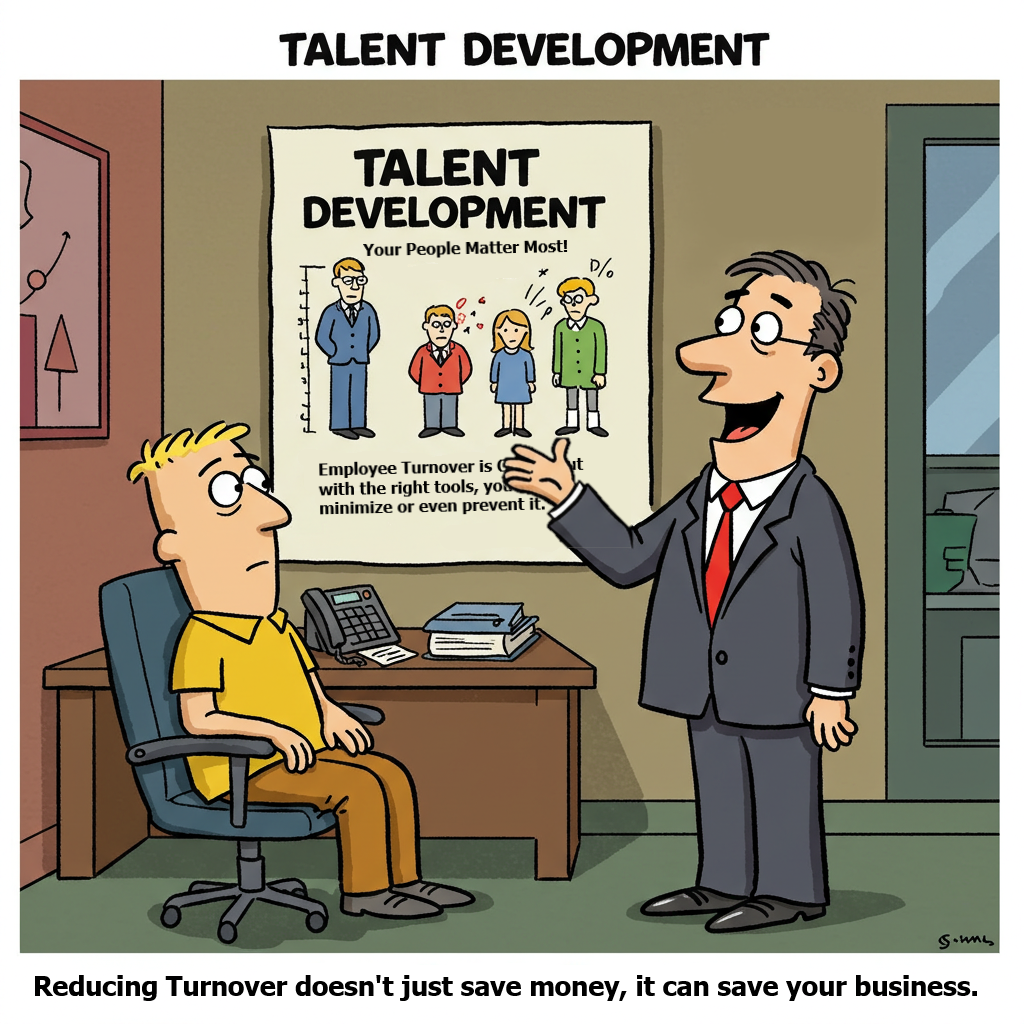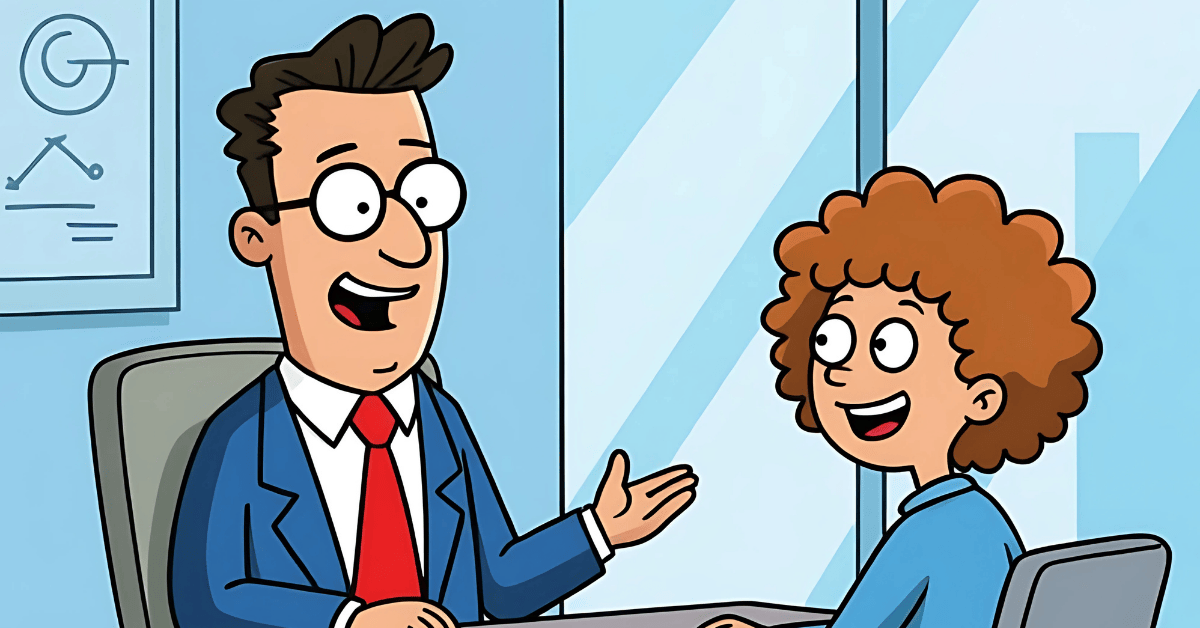
Top Strategies to Reduce Employee Turnover Using AI Insights

Employee turnover is a costly and disruptive issue for businesses of all sizes, but for small and medium-sized businesses (SMBs), the impact can be particularly detrimental. High turnover rates lead to increased recruiting and training costs, decreased productivity, and a loss of valuable company knowledge. The good news? Artificial Intelligence (AI) offers a powerful solution to help companies reduce employee turnover by providing deep insights into workforce dynamics, engagement levels, and potential attrition risks. In this blog, we’ll discuss top strategies for leveraging AI insights to retain your best talent and create a more stable and motivated workforce.

1. Identify Early Warning Signs of Employee Turnover
One of the greatest advantages of AI is its ability to predict turnover risks before they become a problem. Traditional HR tools often rely on past data and qualitative feedback, which may not reveal subtle issues until it’s too late. With AI-driven tools, you can analyze a combination of factors—such as declining engagement, reduced productivity, and changes in behavior patterns—to identify employees who may be at risk of leaving.
How to Use AI for Early Detection:
-
Use AI-powered platforms like MQi to track employee sentiment and engagement levels in real time.
-
Set up automated alerts for signs of disengagement, such as decreased communication, lack of participation in team activities, or declining performance metrics.
-
Leverage AI-driven surveys to capture honest employee feedback, revealing potential concerns or dissatisfaction.
By proactively identifying these warning signs, managers can take targeted actions to re-engage employees and address issues before they decide to leave.
2. Personalize Employee Development Plans
AI allows companies to go beyond a one-size-fits-all approach to employee development by providing insights into each individual’s unique motivators, strengths, and career aspirations. When employees feel that their development is tailored to their personal goals and motivations, they are more likely to stay with the company long-term.
How to Use AI for Personalized Development:
-
Use AI to analyze employee motivations, preferred learning styles, and career aspirations.
-
Develop personalized career development plans that align with both business goals and individual interests.
-
Recommend training programs, workshops, or mentorship opportunities based on AI-driven insights.
This approach helps employees see a clear path for growth within the organization, leading to higher satisfaction and reduced turnover.
3. Optimize Role and Task Alignment with Motivation-Based Insights
Employees who feel misaligned with their roles or overwhelmed by tasks that don’t suit their skillsets are more likely to become disengaged and consider leaving. AI can help solve this issue by analyzing how employees’ motivations and competencies match their current roles and suggesting adjustments for better alignment.
How to Use AI for Task and Role Optimization:
-
Implement AI tools like Sherpa to evaluate how well employees’ motivations and competencies fit with their current responsibilities.
-
Reassign tasks or projects based on AI recommendations to ensure employees are working in areas where they can excel.
-
Use AI insights to structure teams more effectively, matching complementary skills and motivations.
Optimizing role alignment not only enhances engagement but also boosts overall productivity and job satisfaction, making employees more likely to stay.
4. Improve Manager-Employee Relationships with AI-Driven Coaching
The relationship between managers and their direct reports plays a critical role in employee retention. Employees often leave managers, not companies. AI can enhance these relationships by offering insights into how managers can better support and communicate with their team members.
How to Use AI for Manager-Employee Coaching:
-
Use AI to identify communication gaps, collaboration issues, or areas where managers can provide more support.
-
Provide managers with AI-driven suggestions for personalized coaching, feedback, and recognition tailored to each team member’s preferences.
-
Set up automated reminders for managers to check in with employees who show signs of disengagement or dissatisfaction.
Strengthening these relationships through AI-driven insights leads to better management practices and a more supportive work environment.
5. Implement AI-Driven Employee Recognition Programs
Feeling appreciated is a key driver of employee satisfaction and retention. AI can help identify achievements that might otherwise go unnoticed, making it easier to implement timely and meaningful recognition.
How to Use AI for Employee Recognition:
-
Use AI to track performance milestones, project contributions, and collaborative efforts.
-
Set up automated recognition prompts to acknowledge achievements as they happen.
-
Analyze engagement data to identify employees who may be putting in extra effort or going above and beyond their roles.
By ensuring that all contributions are recognized and valued, businesses can create a culture of appreciation that encourages employees to stay.
6. Address Employee Concerns with AI-Powered Sentiment Analysis
Understanding how employees feel about their roles, team dynamics, and the company culture is essential for maintaining engagement and retention. AI-powered sentiment analysis tools can analyze feedback, reviews, and communication patterns to gauge employee morale and detect underlying issues.
How to Use AI for Sentiment Analysis:
-
Use AI to conduct regular sentiment analysis on employee surveys, feedback, and internal communication.
-
Identify negative trends or concerns that may lead to disengagement or turnover.
-
Address issues promptly by using AI insights to guide conversations and implement solutions that improve employee satisfaction.
By staying ahead of potential issues and addressing concerns early, companies can create a more positive work environment that reduces turnover.

The Future of Employee Retention Lies in AI-Driven Insights
Reducing employee turnover is a complex challenge, but AI provides the tools and insights needed to make data-driven decisions that keep your workforce engaged, satisfied, and committed. By leveraging AI for early detection, personalized development, and enhanced recognition, businesses can create a more stable and motivated workforce.
Ready to reduce turnover and boost employee retention?
Explore how AI-powered tools like MQi and Sherpa can help your business keep top talent engaged and satisfied.


